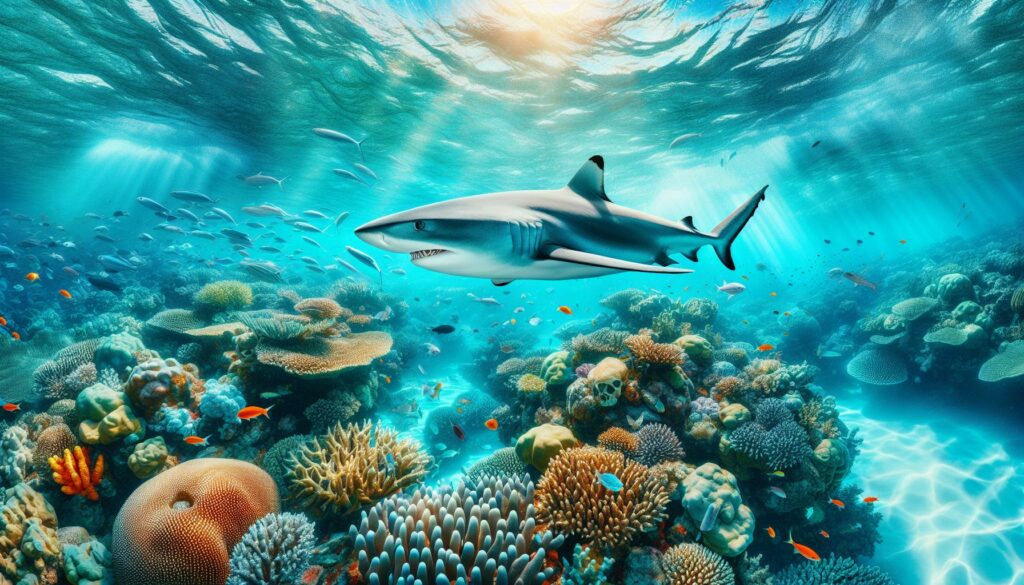The Great Barrier Reef is a mesmerizing underwater paradise, teeming with life and vibrant ecosystems. Among its most fascinating inhabitants are sharks, the apex predators that play a crucial role in maintaining the balance of this delicate marine environment. When I think of sharks, I picture their sleek bodies gliding through crystal-clear waters, embodying both grace and power.
Exploring the world of sharks in the Great Barrier Reef reveals a stunning diversity of species, each with unique adaptations and behaviors. From the majestic hammerhead to the elusive reef shark, these creatures are not just fearsome hunters; they’re vital to the health of the reef. Join me as I dive deeper into the captivating lives of these incredible sharks and uncover the vital role they play in this UNESCO World Heritage site.
Key Takeaways
- Significance of Sharks: Sharks are apex predators in the Great Barrier Reef, playing a vital role in maintaining ecological balance and the health of marine ecosystems.
- Diverse Species: The reef is home to various shark species, including hammerhead, reef, and tiger sharks, each with unique adaptations and behaviors critical to their survival.
- Habitat and Behavior: Sharks inhabit different areas of the reef, utilizing coral formations for shelter and displaying fascinating behaviors such as migratory patterns and specialized hunting techniques.
- Conservation Challenges: Shark populations face severe threats from overfishing and climate change, necessitating urgent conservation efforts to preserve these essential marine creatures.
- Protection Initiatives: Effective conservation strategies include raising awareness, establishing marine protected areas, and implementing sustainable fishing practices to safeguard shark habitats and promote recovery.
- Impact on Biodiversity: The presence of sharks significantly influences marine biodiversity, contributing to the overall resilience and health of the Great Barrier Reef ecosystem.
Sharks in the Great Barrier Reef
Sharks in the Great Barrier Reef play a crucial role as apex predators, influencing the health and stability of the ecosystem. The diversity of species found here includes hammerhead sharks, reef sharks, and tiger sharks, among others, each exhibiting unique adaptations and behaviors tailored to their environment.
Common Shark Species
- Hammerhead Sharks: Notable for their distinctive heads, these sharks often hunt in schools, showcasing complex social behaviors.
- Reef Sharks: These small to medium-sized sharks, including blacktip and whitetip reef sharks, patrol the reef and are essential for controlling prey populations.
- Tiger Sharks: Recognized by their broad, striped bodies, tiger sharks are opportunistic feeders, consuming a varied diet from fish to sea turtles.
Habitat and Distribution
Sharks inhabit various zones within the Great Barrier Reef, from shallow lagoons to deeper waters. They often seek shelter in coral formations, utilizing the structures for protection and hunting. Areas with abundant prey, such as schools of fish, attract these predators, showcasing their essential role in the food web.
Behavior and Adaptations
Sharks exhibit fascinating behaviors, including migratory patterns and hunting techniques. Many species undertake seasonal migrations to follow prey or seek warmer waters. Their keen senses, such as acute hearing and the ability to detect electrical signals, enable them to thrive in this diverse marine environment.
Conservation Status
Shark populations in the Great Barrier Reef face threats from overfishing and habitat loss. Conservation efforts are vital to ensure these apex predators maintain their role in the ecosystem. Measures include protected areas and regulations on fishing practices to safeguard their habitats and promote healthy populations.
Types of Sharks Found in the Great Barrier Reef
The Great Barrier Reef hosts several shark species, each playing a crucial role in marine ecosystems. Notable types include reef sharks, hammerhead sharks, and whale sharks.
Reef Sharks
Reef sharks, comprising blacktip and whitetip species, prominently inhabit the Great Barrier Reef. Blacktip reef sharks favor shallow waters near coral reefs, utilizing their agility to hunt small fish. Whitetip reef sharks often rest in caves and overhangs, actively feeding at night. Both species maintain prey populations, supporting the overall health of the reef.
Hammerhead Sharks
Hammerhead sharks, recognized by their unique head shape, are social creatures often found in schools. Species like the great hammerhead frequent the reef system, known for their exceptional vision and advanced hunting strategies. They primarily target schools of fish, efficiently using their wide heads to detect prey. Their migratory behavior reveals their adaptability to various environments around the reef.
Whale Sharks
Whale sharks, the largest fish species, occasionally visit the Great Barrier Reef. They primarily filter-feed on plankton, using their massive mouths to consume tiny organisms. These gentle giants typically migrate to nutrient-rich areas, showcasing temporary associations with the reef. Their unique presence contributes to the biodiversity of the region while drawing ecotourism interest.
Importance of Sharks in the Ecosystem
Sharks play a crucial role in maintaining the health and stability of the Great Barrier Reef’s ecosystem. Their presence affects the entire marine food web, showcasing their importance beyond just their predatory nature.
Role as Apex Predators
Sharks serve as apex predators, sitting at the top of the food chain. By preying on weaker or diseased fish species, they help maintain healthy populations, preventing overpopulation and the depletion of resources. For instance, blacktip reef sharks regulate smaller fish populations around coral reefs, allowing various species to thrive. Their hunting practices promote genetic diversity among prey, enhancing the overall resilience of marine communities.
Impact on Marine Biodiversity
Sharks significantly influence marine biodiversity within the Great Barrier Reef. Their predation patterns help shape the structure of the ecosystem by controlling the abundance of other species. This check on prey populations leads to a balanced ecosystem, promoting various marine life, including coral, fish, and invertebrates. An increase in shark populations often correlates with the recovery of overfished species, highlighting their crucial role in supporting biodiversity. Protecting sharks ensures the continued health and diversity of the reef, impacting the ecological balance profoundly.
Threats to Sharks in the Great Barrier Reef
Sharks in the Great Barrier Reef face several significant threats that jeopardize their populations and, consequently, the health of the entire marine ecosystem.
Overfishing
Overfishing poses a critical threat to shark populations. Unsustainable fishing practices target sharks for their fins, meat, and liver oil. Between 63 million and 273 million sharks are caught annually, with many species experiencing dramatic declines. Species such as hammerheads and tiger sharks suffer greatly due to high demand in culinary markets and traditional medicine. The loss of apex predators disrupts the ecological balance, leading to overpopulation of certain fish species, which can cause a decline in coral health. Regulatory measures, including fishing quotas and protected areas, serve as vital tools to combat overfishing and safeguard shark populations.
Climate Change
Climate change significantly impacts shark habitats and behavior. Rising ocean temperatures influence the distribution and migration patterns of many shark species, including those found in the Great Barrier Reef. Increased coral bleaching events, driven by warmer waters, denigrate the reef’s health and diminish prey availability. Ocean acidification further impacts marine ecosystems, affecting the food web and reducing the abundance of marine life on which sharks depend. Protecting and managing shark populations demands urgent action to mitigate climate change effects, ensuring the long-term resilience of the Great Barrier Reef’s biodiversity.
Conservation Efforts
Conservation efforts targeting sharks in the Great Barrier Reef focus on protecting populations and habitats. These initiatives ensure the sustainability of the reef’s ecosystem and highlight the importance of sharks as apex predators.
Awareness and Education
Awareness and education programs play a crucial role in conservation efforts. These initiatives aim to inform local communities, tourists, and policymakers about the significance of sharks in maintaining ecological balance. Educational workshops, school programs, and community events promote understanding of sharks’ behaviors and their vital role in the marine ecosystem. Campaigns utilizing social media, documentaries, and public outreach foster a greater appreciation for sharks, encouraging responsible environmentally-friendly practices among visitors to the reef.
Marine Protected Areas
Marine protected areas (MPAs) serve as vital conservation tools in safeguarding shark populations and their habitats. Establishing MPAs restricts activities like fishing and mining, allowing marine ecosystems to thrive without human interference. In the Great Barrier Reef, several MPAs provide safe zones where sharks can feed, breed, and recover from fishing pressures. Research indicates that MPAs contribute to increased biodiversity and fish population recovery, promoting healthier ecosystems. Enhanced management and enforcement of these protected areas are essential for ensuring long-term conservation success.



